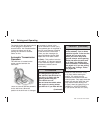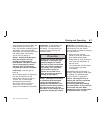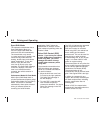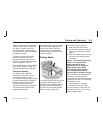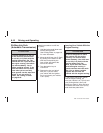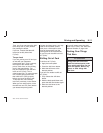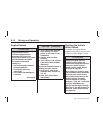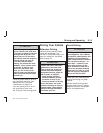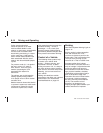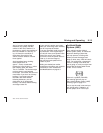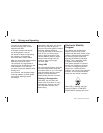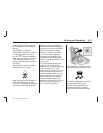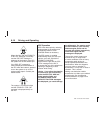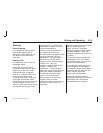
{ CAUTION
It can be dangerous to get out
of your vehicle if the shift lever
is not fully in PARK (P) with the
parking brake firmly set. Your
vehicle can roll. Do not leave
your vehicle when the engine is
running unless you have to.
If you have left the engine
running, the vehicle can move
suddenly. You or others could
be injured. To be sure your
vehicle will not move, even
when you are on fairly level
ground, always set the parking
brake and move the shift lever
to PARK (P).
Follow the proper steps to be sure
your vehicle will not move. See
Shifting Into Park (Automatic
Transmission) on page 8-10.
If you are parking on a hill and if
you are pulling a trailer, also
see Towing a Trailer on page 9-85.
Driving Your Vehicle
Defensive Driving
Defensive driving means “always
expect the unexpected.” The
first step in driving defensively is to
wear your safety belt, see Safety
Belts on page 1-5.
{ CAUTION
Assume that other road users
(pedestrians, bicyclists, and
other drivers) are going to be
careless and make mistakes.
Anticipate what they might do
and be ready. In addition:
• Allow enough following
distance between you and
the driver in front of you.
• Focus on the task of driving.
Driver distraction can cause
collisions resulting in injury or
possible death. These simple
defensive driving techniques
could save your life.
Drunk Driving
{ CAUTION
Drinking and then driving is
very dangerous. Your reflexes,
perceptions, attentiveness, and
judgment can be affected by
even a small amount of alcohol.
You can have a serious — or
even fatal — collision if you
drive after drinking. Do not
drink and drive or ride with a
driver who has been drinking.
Ride home in a cab; or if you
are with a group, designate a
driver who will not drink.
Death and injury associated with
drinking and driving is a global
tragedy.
Alcohol affects four things that
anyone needs to drive a vehicle:
judgment, muscular coordination,
vision, and attentiveness.
Driving and Operating 8-13
2008 - Pontiac G8 Owner Manual




